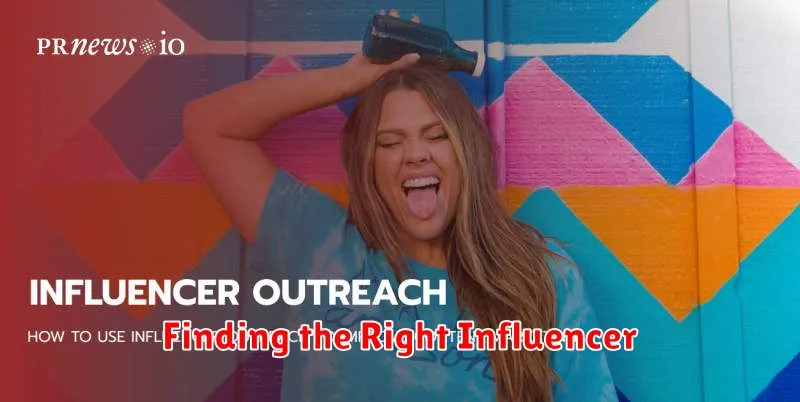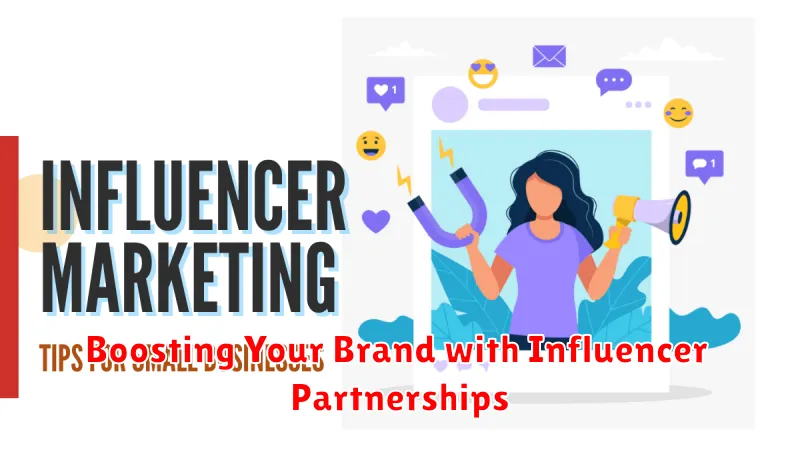In today’s dynamic digital landscape, influencer marketing has emerged as a powerful strategy for brand building. Influencer partnerships offer businesses a unique opportunity to connect with their target audience on a more personal and engaging level, fostering trust and driving brand awareness. By leveraging the credibility and reach of relevant influencers, brands can effectively amplify their message, generate buzz, and ultimately boost sales. This article explores the strategic advantages of incorporating influencer collaborations into your marketing plan and provides actionable insights on how to maximize the return on investment (ROI) of your influencer marketing campaigns.
From mega-influencers with millions of followers to micro-influencers specializing in niche markets, identifying the right influencer partners is crucial for successful brand promotion. This guide delves into the key considerations for selecting influencers who align with your brand values and target audience. Learn how to develop effective influencer marketing strategies, negotiate mutually beneficial partnerships, and measure the impact of your influencer campaigns to ensure optimal results and achieve your brand objectives.
Why Work with Influencers?
In today’s digital landscape, consumers are bombarded with advertising. Traditional methods are becoming less effective, and businesses need innovative strategies to cut through the noise. Influencer marketing offers a powerful solution.
Influencers have cultivated a dedicated and engaged audience who trust their recommendations. This established trust translates into a powerful marketing tool for brands. By partnering with the right influencers, your brand gains access to a pre-built community, bypassing the challenges of building brand awareness from scratch.
Enhanced Credibility: When an influencer recommends your product or service, their followers perceive it as a genuine endorsement rather than a paid advertisement. This organic approach significantly boosts your brand’s credibility and builds trust with potential customers.
Targeted Reach: Influencers often specialize in specific niches, allowing you to target your marketing efforts precisely. This focused approach ensures your message reaches the most relevant audience, maximizing your return on investment. This allows brands to go beyond broad demographic targeting and connect with consumers based on shared interests and values.
Finding the Right Influencer

Identifying the ideal influencer for your brand requires careful consideration. It’s not just about follower count; it’s about finding a partner whose audience aligns with your target market. An influencer’s values and content style should also resonate with your brand identity.
Start by researching influencers within your niche. Look at their past collaborations and the engagement they receive. Do their followers actively interact with their content? Are they genuinely interested in the products or services the influencer promotes? These are crucial factors in determining the potential success of your partnership.
Consider using influencer marketing platforms or tools. These resources can help you filter influencers based on specific criteria like audience demographics, engagement rates, and content focus. This allows you to narrow down your search and identify potential partners who are most likely to deliver results.
Finally, don’t underestimate the importance of a genuine connection. Reaching out to influencers whose work you genuinely admire will make the collaboration feel more natural and authentic. A strong partnership built on mutual respect and understanding will likely yield the best results for both parties.
Setting Clear Collaboration Terms
A successful influencer partnership hinges on clearly defined terms. A formal contract, or at minimum a detailed agreement, is essential to protect both parties and ensure campaign success. This document should outline all aspects of the collaboration, leaving no room for misinterpretation.
Key elements to include are the scope of work, deliverables (number of posts, stories, etc.), timeline, payment terms, and usage rights for the content created. Specify the exact messaging the influencer should use, any required hashtags, and any brand guidelines they need to adhere to.
Payment should be clearly defined, outlining the agreed-upon rate, payment schedule, and any bonus structures. Usage rights are crucial, specifying how long the brand can use the content created, and on which platforms. For example, can the brand repurpose the content on their website or in other marketing materials?
Finally, address exclusivity. Will the influencer be restricted from working with competitors during a specific timeframe? Clarifying these terms upfront prevents misunderstandings and fosters a productive partnership.
Authentic vs Sponsored Content
Maintaining authenticity is crucial in influencer marketing. Consumers are savvy and can often detect forced or inauthentic endorsements. This section explores the differences between authentic and sponsored content and how to strike the right balance.
Authentic content stems from the influencer’s genuine interest and alignment with your brand. It doesn’t feel like an advertisement but rather a natural integration of your product or service into their usual content. This type of content often resonates more strongly with audiences because it feels less promotional.
Sponsored content, while clearly labeled as a paid partnership, can still maintain authenticity. Transparency is key. When an influencer genuinely appreciates your brand and discloses the partnership, their followers are more likely to accept the endorsement. The sponsored content should still align with the influencer’s typical style and audience interests.
Finding the balance involves collaborating with influencers who genuinely connect with your brand values. Encourage creative freedom within the campaign guidelines to allow their authentic voice to shine through, even within sponsored posts.
Measuring Campaign Impact
Accurately measuring the impact of your influencer marketing campaigns is crucial to understanding return on investment (ROI) and optimizing future strategies. It’s not enough to simply hope for increased brand awareness; you need quantifiable data.
Several key metrics can provide valuable insights into campaign performance. Website traffic from the influencer’s audience can be tracked using UTM parameters. This allows you to see how much traffic is directly attributable to the partnership. Engagement metrics, such as likes, comments, and shares on influencer posts, reveal audience response and the content’s effectiveness. Reach, the total number of unique users exposed to the campaign, helps gauge overall brand visibility.
Beyond these basic metrics, consider tracking conversions. This could include sales, sign-ups, or downloads directly linked to the influencer campaign. Setting up trackable links and promo codes specifically for the collaboration can effectively measure conversions. Brand lift studies, while more complex, offer deeper insights into shifts in brand perception and purchase intent following an influencer campaign.
It is important to establish clear campaign goals upfront and align your measurement strategy accordingly. This ensures you are tracking the most relevant metrics for your specific objectives.
Building Long-Term Relationships
Long-term influencer partnerships offer significant advantages over one-off campaigns. They allow for deeper integration of your brand into the influencer’s content, fostering authenticity and building trust with their audience.
Cultivating these relationships requires a strategic approach. Begin by identifying influencers whose values align with your brand. Shared values are the foundation of a strong partnership. Look beyond follower count and consider engagement rates and audience demographics to ensure a good fit.
Once you’ve identified potential partners, focus on building genuine connections. Treat influencers as collaborators, not just promotional tools. Open communication and mutual respect are crucial. Involve them in the creative process, allowing them the freedom to develop content that resonates with their audience while effectively showcasing your brand.
Ongoing communication is key to nurturing these relationships. Regular check-ins, feedback sessions, and collaborative brainstorming can strengthen the partnership and lead to more impactful campaigns over time. This fosters a sense of community and shared success.

